F10 ART 330D Multimedia Design: Time/Sound/Space
As technology advances, design media is increasingly able to blur the boundaries between  digital and physical spaces. Through experimental approaches to video and other time-based media, students will investigate these boundaries to enrich experiences, as well as orient, educate or delight an audience. Using a foundational understanding of graphic design, students will explore territories in experiential design, motion, film, and sound, generating projects that include both digital and physical media.
digital and physical spaces. Through experimental approaches to video and other time-based media, students will investigate these boundaries to enrich experiences, as well as orient, educate or delight an audience. Using a foundational understanding of graphic design, students will explore territories in experiential design, motion, film, and sound, generating projects that include both digital and physical media.
Taught by Amy Auman M/W 1:00pm-3:50pm
F20 ART 319J Sculptural Ceramics
 Structural Ceramics is a course designed for advancing study in 3D practices within clay processes and in sculpture. Several techniques in clay will be explored and focus will be emphasized on hand-building. Methods of creating are coiling, slab building, casting, and subtractive modeling. In this course, practice and research clay as a material that engages in structure and introduces new sculptural ideas defining scale, balance, form, etc. Surface design with cold finishes and glazes, firing processes, and mold making will be explored as means of
Structural Ceramics is a course designed for advancing study in 3D practices within clay processes and in sculpture. Several techniques in clay will be explored and focus will be emphasized on hand-building. Methods of creating are coiling, slab building, casting, and subtractive modeling. In this course, practice and research clay as a material that engages in structure and introduces new sculptural ideas defining scale, balance, form, etc. Surface design with cold finishes and glazes, firing processes, and mold making will be explored as means of 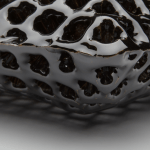 building and finishing content
building and finishing content
Discussion and presentations will focus on the history and contemporary traditions of ceramic structures and sculptures. Emphasis will be placed on critical assessment and articulation of material.
Taught by Andrea Moon T/TH 1:00 – 3:50 pm
F20 ART 385D
Art Seminar: Fantastic Voyage and Scales of Wonder
Affective encounters with scale—encounters that make us aware of our bodies in relationship to the world around us—occur broadly throughout human experience, from viewing
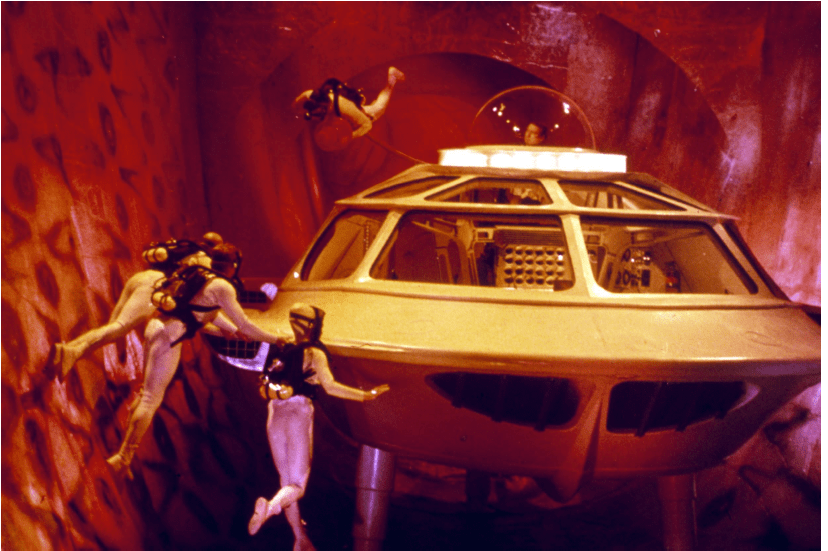
Fantastic Voyage (film still), 1966
miniature particles through the lens of a microscope to wandering through monumental physical environments. Undeniably, scale and affect are integral to the lived experience and to many time-based artworks over the past half century.
This course will examine scale as a central theme and explore the various ways in which it plays out in discreet time-based works, including: Charles and Ray Eames’s The Powers of Ten; Victoria Vesna’s Noise Aquarium; Team Lab’s Infinite Crystal Universe; Mat Collishaw’s All Things Fall and Sordid Earth; Tony Oursler’s The Influence Machine; Jennifer Steinkamp’s 6EQUJ5, and the 1966 cult film Fantastic Voyage, which inspired Isaac Asimov’s science fiction novel of the same name. Through these works and others, students will examine how the cultural, psychological and aesthetic dimensions of scale play out through a variety of spatial, temporal, and phenomenal encounters. This course will also explore shot scale in addition to affective attunement; the affect of the miniature and the gargantuan (Susan Stewart); the “durationless moment” (Brian Massumi); “cognitive dissonance” (Darko Suvin); and “suspension of disbelief’ (Samuel Taylor Coleridge).
Taught by Patricia Olynyk M 8:30-11:20 am
F20 ART 301E Anatomy Figure Structure
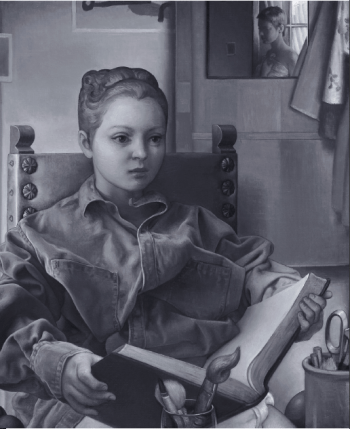
Bookieboy, Jamie Adams
This rigorous drawing course explores traditional and new representations of the figure through the study of its structure and contemporary contexts. Research involves basic anatomy lectures and sketchbook activities which provide a vehicle for discovering the figure’s architecture, mechanics and proportions. Art production is based on in-class and outside projects. Lectures, presentations, critical readings and the analysis of historical and contemporary figurative works support students in their investigations. Prerequisites: F10 101A or 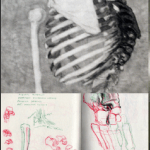 102A Drawing
102A Drawing
T/TH 4:30-7: 20 pm
F20 ART 311U Language of Moving Image
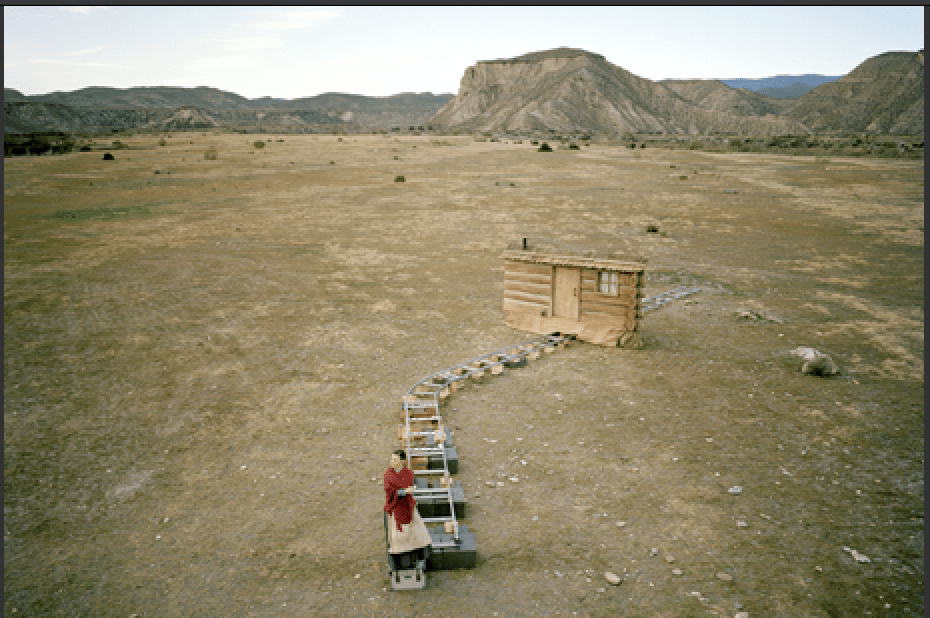
American Night
This course will examine the language of filmic images, which includes—among other elements—shot construction, sequencing, pace, duration, sound integration, scale, and situational contexts. Through screenings, readings, lectures, discussions and critiques, students will develop the analytical skills required to interpret moving images and to think deeply about their productions, which may utilize forms other than video or film and include installation components. Not focused heavily on technical approaches, creative work will be driven predominantly by individual concerns and may be accompanied by written analysis. Prerequisite- Digital Design or Digital Studio. Open to BFA students who have taken the prerequisite, and others, including minors and MFA students, with consent of instructor.
Taught by Richard Krueger T/TH 1:00-2:20 pm
F20 ART 397A Lost in Space Immersive Environments +-Time Based Media
The participatory turn in art and spatial practices over the past five-and-a-half decades has produced an exciting array of immersive environments that enhance the viewer’s perception of their bodily relationship to space. A key mechanism in this choreography often involves the optical representation of shadows and mirrors, captivating visual phenomena and/or moving projections. While some produce unique phenomenological experiences, others offer
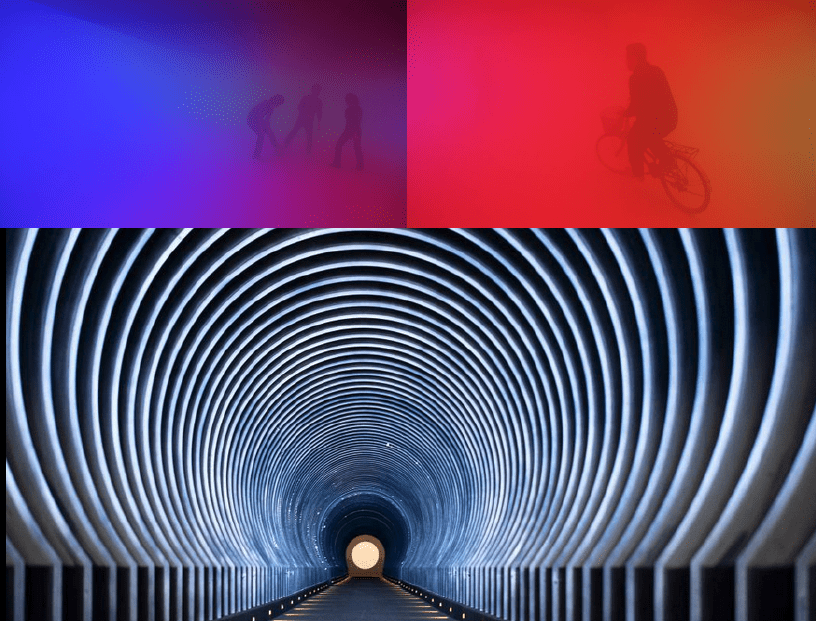
Olafur Eliasson, Fog Room, 2010; James Turrell, Roden Crater, (work in progress)
nuanced or explicit sociopolitical meaning. In any case, technology often activates many spatially oriented works, dramatically altering the tenor of the embodied experience while offering new ways for our technologically-mediated sensoria to shape our sense of presence in the world.
This seminar and studio-based course will explore installation art and immersive environments that span art, design, and architecture, many of which use time-based media to affect the viewer’s awareness of corporeality. Examples will include Olafur Eliasson’s FogRoom and Multiple Shadow Room, James Turrell’s Light Reignfall, Yayoi Kusama’s InfinityMirror Rooms, Anish Kapoor’s Cloud Gate and Whirlpool, Diller Scofiddio and Renfro’s Blur Building, Jennifer Steinkamp’s Jimmy Carter, Krzysztof Wodiczko’s A House Divided…, Cyprien Gaillard’s Nightlife, and Won Ju Lim’s California Dreamin’. This course will also explore how immersive spaces operate on different registers while reinforcing the viewer’s recognition of themselves as doppelganger, hybrid, or Other. Students will learn how each work in its own way tinkers with the viewer’s perception of their own bodily scale and encourages spectacular forms of engagement that reinforce the human sensorium.
Taught by Patricia Olynyk M/W 1:00-3:50 pm
F10 ART 229A Introduction to Time Based Media Arts: Material & Culture
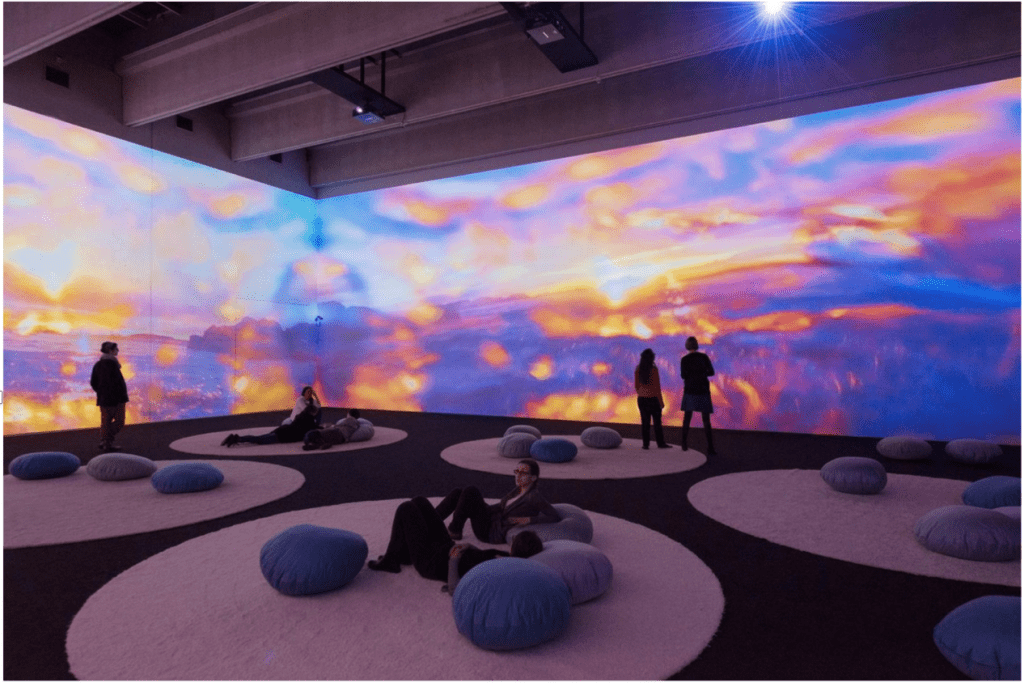
Pipilotti Rist Gnade Donau Gnade2, 2013-2015 Photo: Lisa Rasti
This studio invites students interested in learning about contemporary visual artists who use time as the medium of expression through performance, video, film, sound, music, dance, animation, installation, interactivity and other cross-disciplinary approaches to time-based form. Time Based + Media Art (TB+MA) Material + Culture Working with Time serves as an introduction to the new area of concentration in the school of art and leads towards taking more advanced courses offered in the TB + MA area. Students learn basic recording, filming and editing techniques as well as become familiar with the historical examples of time-based and media practices. Several small projects in time-based and media art are created by the students throughout the semester and under supervision of the instructor. Lectures, demonstrations, short readings, lab time and visiting artists are part of this course. Final projects are shared with the public. BFAs, BAs as well as MFAs have priority while students from other areas and departments are welcome to contact the instructor.
Taught by Monika Weiss T/TH 1:00-3:50 pm
***For the F21 semester, Material + Culture courses will continue to focus on material acclimation within their respective disciplines. The concurrent offering of these courses is designed to create moments of shared interaction between faculty and students enrolled in all three courses. This will include some lectures, presentations, and a collaborative project.
Visit Sam Fox Art & Design Electives Fall 2021 for more course details.